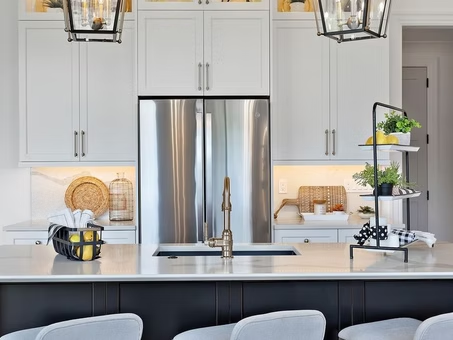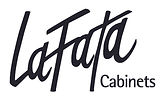The Complete Handbook for Finding Best New Cabinets for Your Business Needs
In the fast-paced world of business, the demand for efficient storage solutions is more critical than ever, especially when it comes to New Cabinets. According to a recent study by the National Association of Business Resources, nearly 67% of businesses report that inadequate storage compromises their operational efficiency and employee productivity. As companies continue to evolve, the selection of the right cabinets becomes paramount, not only for aesthetics but also for functionality and space optimization.

Cabinetry impacts not just the organization of physical spaces but also employee morale and workflow. In this comprehensive guide, we will explore the essential factors to consider when choosing New Cabinets tailored to your specific business needs, helping you make informed decisions that align with today's industry standards.
Understanding Your Business Needs for Cabinet Selection
When it comes to selecting cabinets for your business, understanding your specific needs is paramount. Each type of business has unique requirements that influence the choice of cabinets, from retail spaces aiming for aesthetic appeal to manufacturing units prioritizing functionality and durability. It's essential to evaluate the materials, design, and layout that best align with the day-to-day operations of your business.
Take the time to assess what kind of storage capacity you require, how often the cabinets will be accessed, and the environment in which they will be used. For instance, if you're running a bustling kitchen or workshop, opting for robust cabinets that can withstand heavy use and provide ample storage is crucial. On the other hand, if your focus is on creating an inviting customer experience, you might prioritize stylish designs that enhance your branding. By aligning your cabinet selection process with your business needs, you can ensure a meaningful investment that enhances efficiency and aesthetics in your workspace.
The Complete Handbook for Finding Best New Cabinets for Your Business Needs
| Cabinet Type | Material | Size (inches) | Price Range | Ideal Use Case |
|---|---|---|---|---|
| Base Cabinets | Plywood | 30 x 36 | $200 - $500 | Kitchen Storage |
| Wall Cabinets | MDF | 30 x 24 | $150 - $350 | Kitchen Upper Storage |
| Tall Cabinets | Vinyl | 24 x 84 | $300 - $700 | Pantry Storage |
| Corner Cabinets | Particle Board | 36 x 36 | $250 - $600 | Efficient Corner Space |
| Display Cabinets | Glass and Wood | 48 x 72 | $400 - $900 | Showcase Products |
Key Features to Compare When Choosing New Cabinets
When choosing new cabinets for your business, it's crucial to compare key features to ensure you find the best fit for your needs. Start by evaluating the material; solid wood is a popular choice for its durability and timeless appeal. It’s essential to understand the benefits of different materials, as they can significantly affect both the style and the longevity of your cabinets.

Another aspect to consider is the cabinet construction. Look for cabinets with sturdy joinery methods, such as dovetail joints or mortise and tenon. This will contribute to the overall integrity and strength of the cabinets, making them a worthy investment for your business.
Additionally, consider functionality. Assess the storage options and organization features available, like adjustable shelves and pull-out drawers, which can enhance accessibility and usability in a busy kitchen environment. Always compare prices and warranties, as these factors can influence your long-term satisfaction. Remember to keep your specific business needs in mind while exploring various options.
Material Choices: Comparing Wood, Metal, and Composite Cabinets
When selecting cabinets for your business needs, one of the most critical decisions revolves around the material used.
 Wood, metal, and composite materials each offer unique advantages that can significantly influence your choice.
Wood cabinets, while aesthetically pleasing and versatile, require careful consideration regarding maintenance and durability.
They offer a warm, classic look that can enhance the ambiance of any workspace.
However, they may be susceptible to water damage and warping over time, making them less ideal for high-moisture environments.
Wood, metal, and composite materials each offer unique advantages that can significantly influence your choice.
Wood cabinets, while aesthetically pleasing and versatile, require careful consideration regarding maintenance and durability.
They offer a warm, classic look that can enhance the ambiance of any workspace.
However, they may be susceptible to water damage and warping over time, making them less ideal for high-moisture environments.
On the other hand, metal cabinets present a modern and industrial appeal, often favored for their robustness and ease of maintenance. They are typically more resistant to dents and scratches, making them suitable for busy settings where durability is paramount. Metal options come in various finishes, allowing for a customized appearance that aligns with your brand. Meanwhile, composite cabinets bridge the gap between wood and metal by providing a lightweight, cost-effective solution. They can mimic the look of wood while being more resistant to environmental factors, making them a practical choice for businesses seeking a balance between aesthetics and functionality. Ultimately, the best material for your cabinets will depend on your specific business needs and the environment in which they will be used.
Cost Considerations: Budgeting for Quality Cabinets
When budgeting for new cabinets in a business setting, it’s essential to consider both the initial costs and the long-term value they bring. According to a 2022 report from the National Kitchen and Bath Association (NKBA), businesses can expect to invest anywhere from $5,000 to $50,000 for quality cabinetry, depending on the materials and customizations involved. This investment is significant, but quality cabinets can enhance the aesthetic appeal and functionality of the workspace, potentially increasing employee productivity and satisfaction.
Moreover, cabinet longevity plays a crucial role in budgeting. An industry study by Grand View Research highlighted that high-quality cabinets can last 15-20 years, while lower-end options may require replacement within 5-7 years. Considering this longevity can lead businesses to see the value in spending more upfront; the total cost of ownership becomes more favorable when divided over the cabinet’s lifespan. Additionally, investing in durable cabinets means less frequent replacements, which can lead to savings in both material and labor costs over time.
Design and Functionality: Balancing Aesthetics with Practical Use
When selecting new cabinets for your business, it is essential to consider how design and functionality can work together to create an efficient and aesthetically pleasing environment. A well-thought-out cabinet design not only enhances the visual appeal of your workspace but also facilitates smooth operations. Modern businesses are increasingly leaning towards cabinets that offer flexible storage solutions, allowing for easy organization while maintaining a contemporary look. Factors such as color, material, and style play a significant role in defining the atmosphere of your office or retail space.
Balancing aesthetics with practical use requires thoughtful consideration of your specific business needs. For instance, if you operate in a creative field, you might opt for vibrant colors and sleek lines that inspire innovation. Conversely, a more traditional business might benefit from classic wood finishes and sturdy structures that evoke reliability. Functionality comes into play through features like adjustable shelving, integrated lighting, and modular designs that provide versatility. Ultimately, the goal is to select cabinets that not only reflect your brand identity but also enhance the day-to-day operations of your business, creating an environment that is both inviting and functional.
The Complete Handbook for Finding Best New Cabinets for Your Business Needs
This bar chart illustrates the importance of various factors when selecting cabinets for business needs, such as design, functionality, cost, and durability.


Fall into Function: How LaFata Cabinets Prepares Your Kitchen for the Cozy Season


Back-to-School Kitchen Refresh: How LaFata Cabinets Can Help You Stay Organized This Fall


